Had the colonists been able to hit a target with their muskets, the British would have immediately taken severe losses at Concord and Lexington. Two months later, approximately 2,200 British troops, led by Generals Pigot and Howe, would land on the Charlestown Penisula. They marched to Breed’s Hill (Bunker Hill was nearby.), as part of a strategy to control the surrounding area of Boston as a prelude of tightening a siege. However, the night before, around 1,000 militiamen, under Colonel William Prescott, built earthen embankments some six feet high. British ships launched cannon fire at the fortifications to no avail.
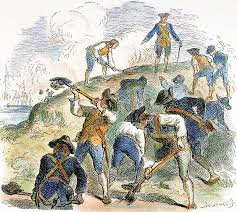
This event is where the famed legend of “Don’t fire until you see the whites of their eyes!” came. This time the colonists’ musket fire hit the mark until they quickly ran out of ammunition. Even though the colonists were then forced to retreat and took their losses then; it was a demoralizing victory for the Redcoats.
In warfare, when upon the enemy soil, a wounded soldier takes up more time and resources than the dead. Furthermore, the battle emboldened the colonists with the confidence that the British were far from invincible and that they could beat them. While the occupation of Boston was secured, it came at a very steep price. Additionally, the colonists just bought a huge chunk of time.
A year later the Declaration of Independence was adopted. The discussion of this will be deferred so as not to detract from the flow of the military battle. To frighten many readers, in advance, you will discover that the Declaration of Independence is NOT the sacred document that you have been led to believe.
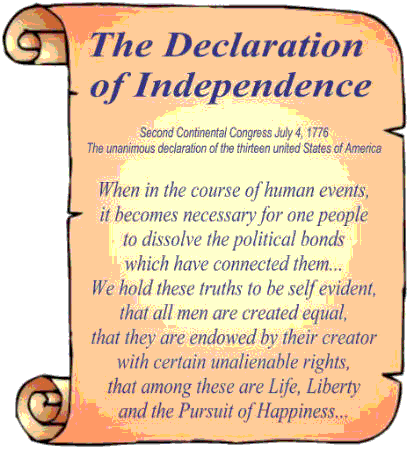
The Second Continental Congress appointed George Washington to take command of the Continental Army. While the selection of Washington was heavily political and in keeping with secret society camaraderie, there were no experienced military leaders among the colonists. However, he, during the French and Indian War, he studied British army manuals, learned significant command principles, and witnessed British formations in rough wooded areas.
Trying to defend New York was an insane task with about 19,000 men. On August 22, 1776, Washington’s men were outflanked on Gowanus Heights. Washington was highly concerned that the Royal Navy would enter the East River and cut-off any retreat. On the night of August 29-30, 1776, Washington ordered all flatboats to his position atop modern-day Brooklyn Heights. Call it what you want, but a thick fog prevailed and concealed the mass evacuation of 9,000 troops into Manhattan.
Many of the soldiers went home in the aftermath. The main remaining group took rest on Harlem Heights, although building entrenchments took place. The bright General Howe had skilled hired soldiers at his disposal. They were called Hessians. However, most came from other small German states. A simple bridge laid across the Bronx by Howe’s men enabled them to take Harlem Heights. This feat forced Washington to retreat in groups, on October 28, 1776. The move was a severe strategic and tactical defeat for the colonists.
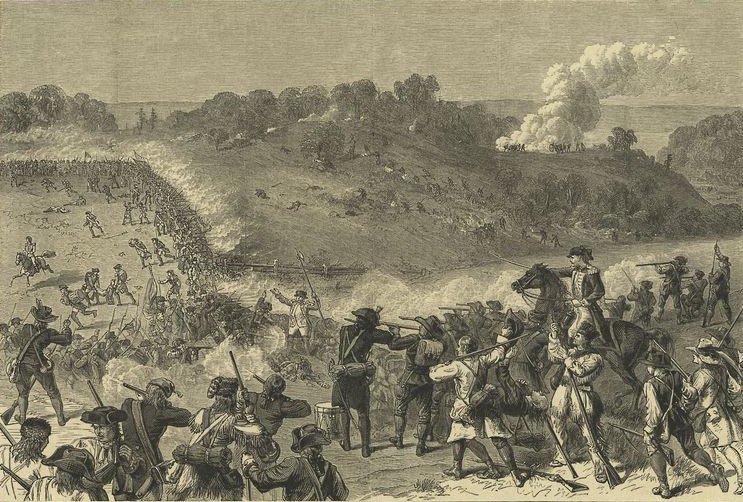
The defeat and retreat from White Plains allowed General Howe to capture Kingsbridge which lead to the rout at Fort Washington which resulted in the capture of over 2,800 colonists. The whole picture was bleak for the Continental Army. Mutinies arose with questions of General Washington’s competence. He indeed committed crucial mistakes. George was an imposing figure, full of verve, and resilience.
The colonists fled across New Jersey with Howe’s relentlessness. They went south across the Delaware River into Pennsylvania. They were low on supplies, ammunition, food, and morale. They encamped there for a few days. The dire situation mandated decisive and audacious action; otherwise, it was all over for the colonists.
Starting on December 25, 1776, and the events of the ensuing ten days, the worm turned. With incredible temerity, Washington’s troops and cannons traversed an icy river and braved a nineteen-mile march in a freezing storm to the Hessian garrison in Trenton. Even though Colonel Cadwalader and General Ewing were not able to join the battle, The Hessians quickly surrendered with 918 taken prisoner along with the dead and wounded.
General George Washington had learned so well from his prior mistakes. Guerrilla tactics took over. He quickly went back over the Delaware. On December 30th, it was back into New Jersey. Upon learning that Generals Cornwallis and James Grant were coming south from Princeton with roughly 8,000 men, Washington was able to convince many militiamen to stay on for another six weeks. Thus the 2,000 troops expanded to 5,000.

Cornwallis’s army tried unsuccessfully to cross the Assunpink Creek Bridge on New Year’s Day. He called it a night; foolishly assuming that Washington’s Army was trapped. During the evening the troops moved north to Princeton clandestinely. Five hundred soldiers manned campfires before leaving. The thick cloth wrapped around the wagon wheels quieted them.

In the wee hours of the 3rd, General Cornwallis found his foe to be a phantom. Meanwhile, on the approach to Princeton, remnants of the rear-guard were overpowered by Washington’s men. Supplies, arms, and prisoners were quickly taken in Princeton before heading to winter quarters in Morristown. It was here that Washington had his troops protect against smallpox via variolation. It is vastly different than vaccines and predated Jenner. Suddenly, General George Washington and a unified colonial army were a force to be reckoned with, and they took rest.
Generals Cornwallis and William Howe looked for an opportunity to strike on their terms. On the morning of September 11, 1777, they came upon the Colonists’ army outpost at Brandywine Creek under cover of dense fog. They split their forces to encircle Washington’s men. Afternoon arrived with the launching of an all-out attack. The Americans were simply off-guard. Though they were able to slow the British, they quickly made haste to Germantown. They left behind over 1,100 killed or captured as well as most of their cannons. The defeat allowed the British to take control of Philadelphia without resistance. Congress was forced to flee. After a stop-over in Lancaster, they settled in York.
Meanwhile, British General John Burgoyne inched south after the risible capture of Fort Ticonderoga. His cockiness gave an opportunity for Horatio Gates to regroup those dejected colonists. Benedict Arnold, Washington’s best infantry leader, was dispatched up. Also the strack regiment of Colonel Daniel Morgan’s Virginia riflemen and two brigades from the Hudson Highlands. Also sent was the Polish engineer, Colonel Thaddeus Kosciusko, who constructed first-rate field fortifications at Bemis Heights. All totaled, Gates’ army was now about 6,500 men.
Then Burgoyne launched on September 19th. Arnold convinced Gates to let him lead Dearborn’s light infantry and Morgan’s troops into a heavily wooded area to parry a flanking attempt. Fresh, organized troops were sent in by Arnold until the jumpy and anxious Gates stopped the action to allow the feeble British to hold the territory.
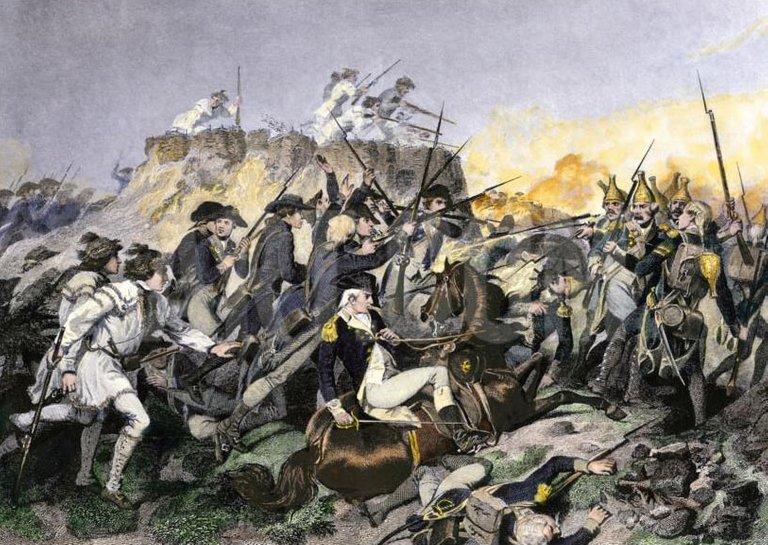
Burgoyne was hung out to dry in more ways than one. He fortified his encampment, instead of fleeing; being so overconfident that reinforcements would come from New York. So he decided to launch another attack on October 7th. The highly envious Gates ordered Arnold to stay put. He ignored and joined the fracas and led a significant thrust; forcing a retreat to Saratoga by Burgoyne’s troops. In just a few days a plethora of militiamen caused Burgoyne’s surrender.
France now viewed America as committed to their declared independence. The French convinced that the colonists were fit to be a formal ally against Britain, eventually sent about 12,000 soldiers and 32,000 sailors to the war. The least was not the Marquis of Lafayette. Additionally, financial assistance and loans came America’s way.
The bulk of the Patriots moved to Valley Forge from the 1777 winter through the spring of 1778. Again, the troops received variolations. Of course, the measure was done in great secrecy as it had an incapacitating effect on the recipients. In the end, smallpox was responsible for only 1% of all deaths. It had been as high as 17%.
In January of 1778, Britain put forth a reconciliation proposal which the colonists turned down. The decline led to intense negotiations with France. Benjamin Franklin was head representative in Paris. As a result, Treaty of Alliance and Treaty of Amity and Commerce made America a recognized independent nation and an ally of France in the Revolutionary War against Britain. Furthermore, the decision was made by France to support the colonists' military efforts fully. France had kept secret their aid to the Americans since 1776. Now there was hope that Spain would join. The half-year stay at Valley Forge vastly improved the colonists’ morale and military discipline, as they received drills by military experts, such as Marquis de Lafayette, Gilbert du Motier, and Friedrich Wilhelm von Steuben.
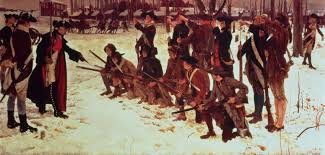
Meanwhile, France’s entry in the war already affected the British. General Clinton was suddenly in a situation of being spread too thinly. He was forced to exit Philadelphia and make paths to New York. d'Estaing’s French fleet took to sail from Toulon in April 1778. The goal was to hook-up with colonists before Clinton’s army could reach New York. The roughly one-hundred-mile trek of approximately 11,000 British and Germans, as well as another 1,000 or so loyalists, also dragged a twelve-mile-long baggage train. They found journey handicapped by abatis constructed across roads, the fouling of wells, and the obligatory burning of bridges.
An advance group of some 4,000 men went at the rear-guard of the British under Major-General Charles Lee by Washington on June 26, 1778. However, Lee failed on many fronts. The British, under Cornwallis, left Monmouth Courthouse and counter-attacked the chaotic engagement by Lee on the 28th. Lee’s men eventually went into full withdrawal. As Washington was advancing with the prime troops on the road to Monmouth, here were Lee's retreating troops and then Lee. Lee was dismissed of command and sent to the rear. Washington quickly regrouped Lee's troops who were then able to delay Cornwallis, until the main force could secure positions.
Without the distraction of too many details, the colonists fought a well-coordinated and intelligent battle. Darkness fell, and the fight ended. The colonists had held the ground. However, Cornwallis and Clinton were able to get the British along with the supplies to New York. Washington and the colonists demonstrated the ability to go toe-to-toe with the British and Hessians.

Contrawise, Britain was acting like a modern-professional-sports-team owner who just cannot restrain from interfering with the operation by chosen professionals. In the aftermath of the twin defeat at Saratoga and the subsequent French entry into the sweepstakes, Lord George Germain, the Secretary of State for the Colonies, surpassed the Peter Principle to establish the Sackville Syndrome. (Look it all up; it’s not as funny if I have to explain it.) He wrote to General Clinton that the capture of the southern Colonies was: "considered by the King as an object of great importance in the scale of the war." Thus we had the Capture of Savannah on December 29, 1779.
In 1777, Kentucky had to fend for itself locally. George Rogers Clark arose among the Kentucky County militia protecting settlements against the indigenous peoples. The Natives had been armed from Fort Detroit and told to reclaim their hunting grounds. Clark had a long talk with the Virginia Governor, Patrick Henry. The go-ahead was for particular British-held villages in the Illinois country. Clark’s scheme involved pulling the rug out from underneath the British influence which was driving the Native American attacks.
On July 4, 1778, Clark and his men marched to Kaskaskia and captured it with zero resistance. The next day Cahokia fell the next day without firing a shot under the leadership of Captain Joseph Bowman. Vincennes surrendered to Clark in August. The Native Americans and French-speaking peoples of the region then refused to take up arms for the British cause. Thus the way became smoothly paved for other villages and British forts to change control.
British Lieutenant-governor, Henry Hamilton, the rat at Fort Detroit, recaptured Vincennes and renamed the garrison Fort Sackville (You just cannot make this stuff up.). Clark depleted all his resources and obtained loans from friends to carry on. A number of his men re-enlisted, along with some fresh blood.
On February 23, 1779, Clark and his approximately 170 men, having travailed the winter elements in a hard, hard trek, sprung a gift upon Fort Sackville. Two days later, it was capitulation, and with Hamilton in custody, it was: game, set, match. Clark’s feat benefited so many things, but not himself.
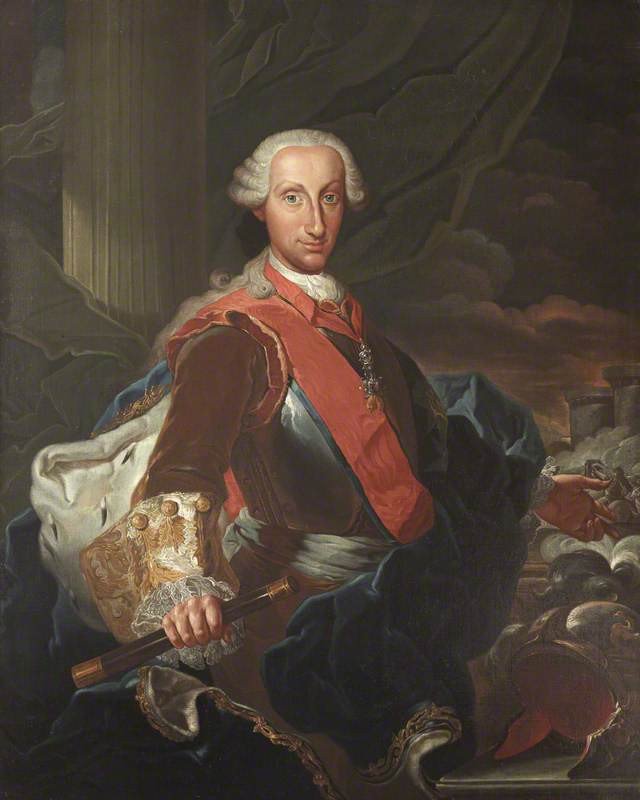
In nature, the weak and wounded are usually attacked and often eaten. The big, bad British Empire was suddenly fair game. On June 21, 1779, King Charles III of Spain performed an improvisation of the Fandango. He sidestepped having an alliance treaty with the American colonies. After all, he represented Blue-blood Imperialism. He could not go around emboldening revolutionaries, especially those perceived to encroach on his claimed territories. So, King Charles III made the only logical decision in the situation: he agreed to French Foreign Minister, Charles Gravier, Comte de Vergennes’ treaty and joined their war against the British. Let’s call it de-facto Americano compacto. Now the Spanish could try to accomplish what they failed at during the Seven Years’ war: recover Minorca and Gibraltar.
The results were relatively swift. Three months later on September 21st, American soldiers and militia assisted Brigadier Bernardo de Galvez (who was also the Governor of Louisiana) in capturing the British garrison at Baton Rouge. Terms included the additional surrender of Fort Panmure at Natchez. Thus this event marked the end of British control of the Mississippi Valley. Spain now had a supply line from the Ohio Valley down to the Gulf of Mexico. The Spanish control accelerated the colonists’ cause.
Lieutenant General Clinton came with a British army of more than 10,000 men and began a siege at Charleston, South Carolina, on April 2, 1780. Nearly six weeks later, Major General Benjamin Lincoln was forced into an unconditional surrender resulting in the capture of more than 3,000 colonists along with a substantial cache of supplies and munitions. The May 12th event marked the worst American defeat of the war. Overconfident General Clinton rushed to New York leaving General Cornwallis in charge of about 8,300 British soldiers. Part of Clinton’s urgency was fostered by a reported imminent French force. The thinly-stretched British had reached their breaking point.
In the immediate aftermath of the Charleston debacle, the British instigated a highly fractional South Carolina to the status of feuding denominations. Loyalists attempted to mollify the Patriot crowd and had the rewarded of sharp violence. Nathanael Greene, Thomas Sumter, and the Swamp Fox, Francis Marion employed maneuver and guerilla warfare to chase the substantially greater British force into Virginia eventually.
Politics, egos, and the manipulations thereof played their particular role on all sides. We already saw that the Patriots were not exempt. Additionally, General Thomas Conway attempted to have Washington replace with General Horatio Gates. Remember Washington took measures to protect the health of his men against smallpox.
On the morning of August 16, 1780, General Cornwallis was outside of Camden, South Carolina. He had about 2,200 soldiers. General Horatio Gates had a comfortable position with about 4,000 forces. However, a significant portion of his troops had contracted dysentery the night before. He foolishly and recklessly attacked the British. Cornwallis’s men moved forward as only the British had bayonets. In the disorganization that followed, more than 900 colonists lay dead, and over 1,000 captured. Plus a massive amount of supplies and munitions were claimed by Cornwallis. Gates, the prospective Washington replacement was relieved of command. General Nathanael Greene took over. A German volunteer for the Continental army, Major-General Johann von Robais, Baron de Kalb had many wounds in the battle and died three days later.
Major Patrick Ferguson’s band of loyalists comprised the western wing of the North Carolina invasion force led by Cornwallis. They were met with heavy resistance from about 1,000 backwoodsmen under the guidance of Virgina’s Colonel William Campbell on October 7, 1780, in what has become known as the Battle of King’s Mountain. Ferguson found his army forced into a defensive position atop the rocky ridge. The frontiersmen stormed the hill many times showed off their deadly marksmanship. In his arrogance, Ferguson rushed down the hill into a storm of bullets. Being irregulars and not having the Geneva Convention, they exacted vengeance on some attempting to surrender.
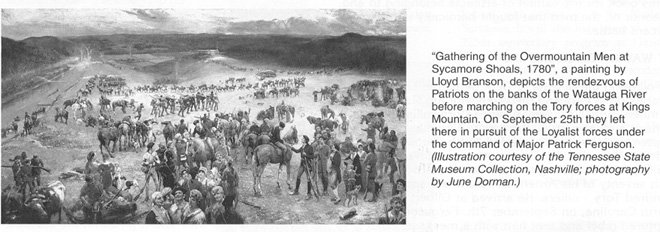
The British presence in the American colonies was in a lot of trouble. The South, a bastion of loyalists, was starting to be sliced up. The chicks of the chicken, George Germain, 1st Viscount Sackville, were coming home to roost. After Major-General Nathanael Greene took over command of the Continental army’s southern force, he made some prudent decisions.
First, he had far fewer troops, food, supplies, and munitions than Cornwallis. By dividing up his troops, the task of quartering them became significantly easier. The sections allowed engagements on multiple fronts, thereby reducing Cornwallis’ force power advantage. Roughly 1,000 mixed colonists moved toward the fortified backcountry village of Ninety-Six, led by Brigadier General Daniel Morgan. Failing to seize it, they lay siege to it. Upon learning of reinforcements on the way, Morgan’s men retreated. Some 1,100 British regulars and Loyalists, with Banastre Tarleton on lead, were sent by Cornwallis to catch Morgan. In his tentative position, Cornwallis could not risk an uprising of the backcountry folk.
Morgan plotted his army by first slipping back to a river at Cowpens on January 17, 1781. As Tarleton initiated engagement, the militia retreated from the front line after firing two rounds. The British assumed it was a rout and dashed straight into intensely focused rifle fire with was supplemented with a cavalry charge and rest of the militia moving back forward. Tarleton got out with his life with less than 300 of his former army. The victory massively uplifted the American spirits. The American armaments and tactics had proven to be superior to the Redcoats.

Cornwallis persisted after Greene until resting at the Dan River. In Virginia, he built his Army up to about 4,500 and returned to North Carolina to face Cornwallis. Near Guilford Courthouse was chosen. On March 15, 1781, an agitated Cornwallis with about 1,900 troops, launched out at Greene. It was a two-hour battle-royal before Greene pulled back to keep his army all in one piece. Over 25% of Cornwallis’ troops were captured, wounded, or killed. As the eccentric, controversial, and sarcastic British statesman, Charles James Fox quipped: “Another such victory would ruin the British army.”
On April 25, 1781, the second battle of Camden (Hobkirk’s Hill) was a British technical victory. They exited in May shortly after the British, in Pensacola, Florida, surrendered on May 8th to de Galvez, who had laid siege. Spain had consolidated the Gulf.
Cornwallis got around the colonies. In April of 1781, he and his scratched, bruised, scarred, and fatigued army dragged themselves toward the Virginian coast. He was hoping to maintain a line of communications with General Clinton and his big army in New York. The restless Cornwallis went after towns and plantations in Virginia before the fortification in Yorktown and the abutting headland across the York River (Gloucester Point) in August.
Marquis de Lafayette, already in Virginia, with about 5,000 soldiers, was ordered by Washington to block over-land exit from Yorktown. Washington out of New York rendezvoused with Count de Rochambeau’s 4,000-men French army. They laid strategy with Count de Grasse. De Grasse set sail from the West Indies to the Chesapeake River. He combined with the fleet under Comte de Barras. The British Admiral, Thomas Graves attempted to prevent this union by conflicting de Grasse’s fleet as soon as it hit the Chesapeake Bay but was overmatched.
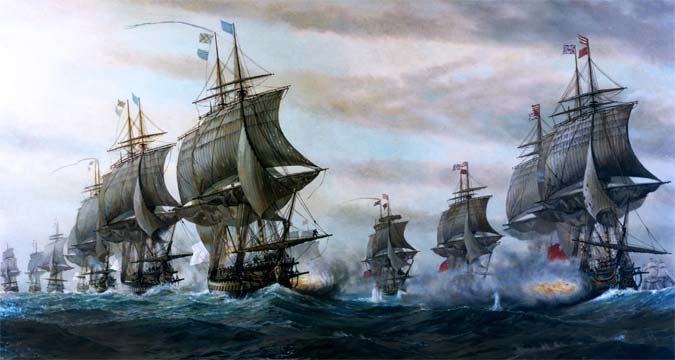
Washington and Rochambeau crossed over the Hudson River on August 21st. They marched south about 200 miles to the head of the Chesapeake Bay; arriving September 5th. Graves again tried at the Battle of Virginia Capes that day. The French naval superiority was far too much. Suddenly, Cornwallis had no means of reinforcements.
Commencing September 14th, Washington, and de Rochambeau was ferried down the Chesapeake to Virginia. They combined with Lafayette and finished off the encasement of Yorktown. De Grasse was able to land another 3,000 French soldiers. The De Grasse’s warships began pounding fortified positions of the British. The 14,000 French and American troops gradually surmounted the bombed areas. Approximately 7,000 British soldiers set out to rescue Cornwallis, but it was too little and too late.
On October 19, 1781, General Cornwallis and 7,087 officers and men marched out. Another 900 or so sailors also surrendered; a frigate, 30 transport ships, 15 galleys, and 144 cannons seized. The land war against the American colonies was now over.
One can spend years sifting through all the details and trivia of the American Revolutionary War. Yes; naval battles carried on for a while. However, the British Empire experienced a bitter defeat. America gained independence or did they?
In Part 7, we will discuss: what did America gain?
https://steemit.com/anarchy/@aedroberts/so-you-think-you-know-american-history-part-1
https://steemit.com/anarchy/@aedroberts/so-you-think-you-know-american-history-part-2
https://steemit.com/anarchy/@aedroberts/so-you-think-you-know-american-history-part-3
https://steemit.com/anarchy/@aedroberts/so-you-think-you-know-american-history-part-4
https://steemit.com/anarchy/@aedroberts/so-you-think-you-know-american-history-part-5
We are The Unmentionables! (Oops!)
Nice post buddy i agree with you but you need to know that past is written by a winner and there will always be at least a 2 sides of a story.
@dado13btc Yeppers, if you go back and read the whole series you will see that as a comment by me and others. That is exactly why I labored to bring this series. It will be tougher and tougher for homers to swallow. However, the truth is the truth no matter how sugar and chocolate is poured over it.
Upvoted with love by #TheUnmentionables - be sure to follow us and check us out if you haven't already!
You can join our Discord Channel at: https://discord.gg/4UqNjs2
Quite detailed, @aedroberts! You got me to chuckle as I read your reference to "de-facto Americano compacto."
Interesting history. I tells us that democracy is born from anarchy. And anarchy bring the end to a rule.